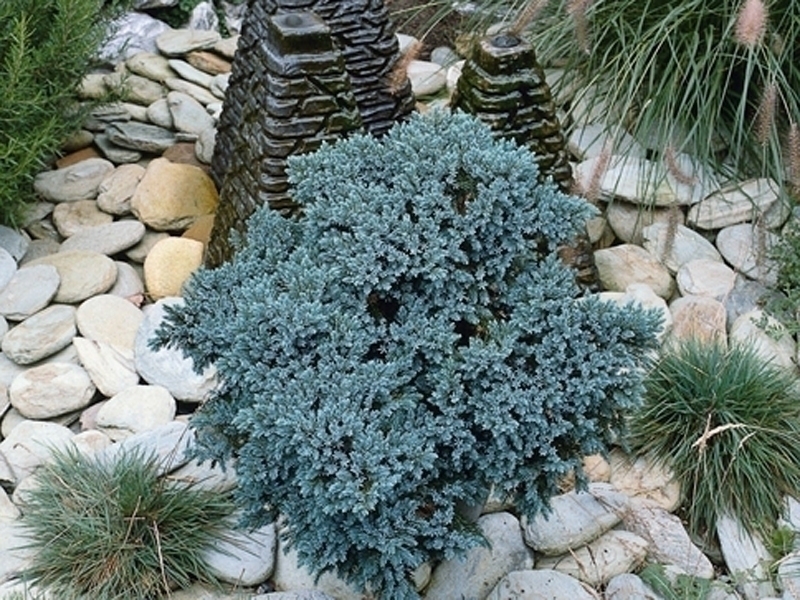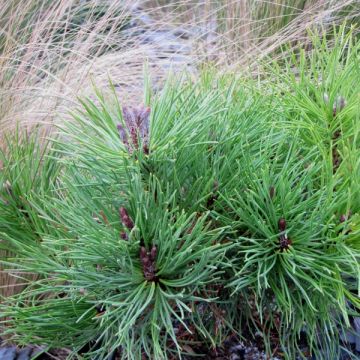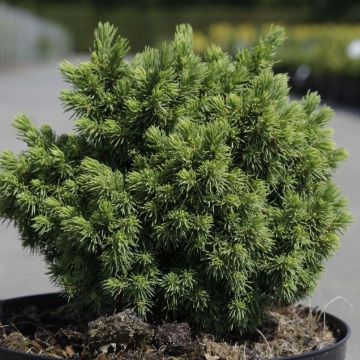

Metasequoia glyptostroboides - Dawn Redwood


Metasequoia glyptostroboides - Dawn Redwood


Metasequoia glyptostroboides - Dawn Redwood


Metasequoia glyptostroboides - Dawn Redwood
Metasequoia glyptostroboides - Dawn Redwood
Metasequoia glyptostroboides
Dawn Redwood, Water Fir
Customer service contacted and quick replacement with a new specimen. This one is perfect, it's its second spring, and it's magnificent. Thank you for your responsiveness.
nicolas, 31/05/2025
Special offer!
Receive a €20 voucher for any order over €90 (excluding delivery costs, credit notes, and plastic-free options)!
1- Add your favorite plants to your cart.
2- Once you have reached €90, confirm your order (you can even choose the delivery date!).
3- As soon as your order is shipped, you will receive an email containing your voucher code, valid for 3 months (90 days).
Your voucher is unique and can only be used once, for any order with a minimum value of €20, excluding delivery costs.
Can be combined with other current offers, non-divisible and non-refundable.
Home or relay delivery (depending on size and destination)
Schedule delivery date,
and select date in basket
This plant carries a 24 months recovery warranty
More information
We guarantee the quality of our plants for a full growing cycle, and will replace at our expense any plant that fails to recover under normal climatic and planting conditions.
Would this plant suit my garden?
Set up your Plantfit profile →
Description
Metasequoia glyptostroboides, also known as Dawn Redwood, is a tall majestic tree with a conical and regular habit, and one of the few deciduous conifers, a characteristic it shares with the Larch and the Bald Cypress. It grows very fast, and has finely cut fern-like foliage, soft to the touch, with a pleasant light green colour in spring. It blazes in autumn with tones of gold, bronze, and copper-pink. This light-loving and moisture-loving species requires space and deserves a prominent place in a large garden. It is a precious species which has become rare in its native country, and it easily acclimatises to our temperate climates.
Metasequoia glyptostroboides, cousin of the Sequoiadendron, is a large conifer from the family of Taxodiaceae or Cupressaceae depending on the classifications. It is native to China, specifically the western part of the Sichuan province, where it was only discovered in 1941. It is the only surviving species of a very ancient genus, whose origin dates back to a geological period called the Cretaceous, simultaneous with the extinction of land dinosaurs and the beginning of a glacial era. Its species name, glyptostroboides, refers to the cone-shaped fruits (strobili) that are very similar to the fruits of cypresses. In its natural habitat, it can reach a height of 40 m (131 ft 2 in) with a spread of 10 m (32 ft 9 in) under good conditions, and develop a conical and erect habit, sometimes almost columnar. This species shows very fast growth in moist soil, and it appreciates temperate climates as well as non-calcareous marshy soils. .
This conifer with high ornamental value has a ribbed trunk at the base, covered with a cracked reddish-brown bark. Its rapid growth allows it to gain 50 cm (19.7 in) to 1 m (3 ft 4 in) per year. Its branches are arranged oppositely and branch out into long persistent branches that bear short deciduous branchlets. The deciduous leaves, arranged in two opposite rows along a common axis and on the same plane, are linear, 8 to 15 cm (3.1 to 5.9 in) long and 1 to 2 mm (0 to 0.1 in) wide, flexible, flattened, and light green in colour in spring. They darken a bit in summer, then take on various shades of yellow, brown, orange, and light red before falling. The flowering occurs on mature individuals. The inflorescences are globose, scaly, and pedunculate cones, measuring 2 to 3 cm (0.8 to 1.2 in) in diameter.
Metasequoia glyptostroboides should be planted in a garden large enough to accommodate it. If the appropriate conditions are met, it will be an exceptional tree, which will be the pride of any gardener who plants it, whom it will undoubtedly outlive, becoming part of the family and garden's history. It can be planted as a focal point, or in a hedge, by a watercourse, or at the edge of the countryside, placed in front of a curtain of Phyllostachys bambusoides, the giant bamboo. Such a massive tree requires a solid base; its location should be carefully chosen, in deep soil and in an open position. It requires little or no maintenance after the first few years, and goes well with other large deciduous conifers such as Larch or Bald Cypress. The true graphic qualities of conifers naturally come to the fore in the design of a contemporary garden, which prefers the aesthetics of shapes, silhouettes, and textures to the dance of flowers. This one, due to its beautiful framework and its twisted trunk on mature subjects, loses none of its majesty in winter.
Metasequoia glyptostroboides - Dawn Redwood in pictures




Plant habit
Foliage
Botanical data
Metasequoia
glyptostroboides
Taxodiaceae (cupressaceae)
Dawn Redwood, Water Fir
China
Other Conifers A to Z
View all →Planting and care
Metasequoia is planted from September to November and from February to June in soil that is deep, close to neutral or slightly acidic, rather fertile, and moist to wet. While it tolerates clay soils, its preference is for loose and loamy or sandy soils that are not too chalky. Choose a sunny and well-cleared location. Soak the root balls well before planting. Add organic compost to the planting hole and water generously for the first three years, and in case of drought as it should never lack water. In poor soil, you can apply a special conifer fertiliser every two years in April. Hoe the soil in summer. This hardy conifer (down to at least -15 °C (5 °F)) fears hot summers, alkaline and too dry soils. Pruning is not necessary.
Planting period
Intended location
Care
Planting & care advice
-
, onOrder confirmed
Reply from on Promesse de fleurs
Similar products
Haven't found what you were looking for?
Hardiness is the lowest winter temperature a plant can endure without suffering serious damage or even dying. However, hardiness is affected by location (a sheltered area, such as a patio), protection (winter cover) and soil type (hardiness is improved by well-drained soil).

Photo Sharing Terms & Conditions
In order to encourage gardeners to interact and share their experiences, Promesse de fleurs offers various media enabling content to be uploaded onto its Site - in particular via the ‘Photo sharing’ module.
The User agrees to refrain from:
- Posting any content that is illegal, prejudicial, insulting, racist, inciteful to hatred, revisionist, contrary to public decency, that infringes on privacy or on the privacy rights of third parties, in particular the publicity rights of persons and goods, intellectual property rights, or the right to privacy.
- Submitting content on behalf of a third party;
- Impersonate the identity of a third party and/or publish any personal information about a third party;
In general, the User undertakes to refrain from any unethical behaviour.
All Content (in particular text, comments, files, images, photos, videos, creative works, etc.), which may be subject to property or intellectual property rights, image or other private rights, shall remain the property of the User, subject to the limited rights granted by the terms of the licence granted by Promesse de fleurs as stated below. Users are at liberty to publish or not to publish such Content on the Site, notably via the ‘Photo Sharing’ facility, and accept that this Content shall be made public and freely accessible, notably on the Internet.
Users further acknowledge, undertake to have ,and guarantee that they hold all necessary rights and permissions to publish such material on the Site, in particular with regard to the legislation in force pertaining to any privacy, property, intellectual property, image, or contractual rights, or rights of any other nature. By publishing such Content on the Site, Users acknowledge accepting full liability as publishers of the Content within the meaning of the law, and grant Promesse de fleurs, free of charge, an inclusive, worldwide licence for the said Content for the entire duration of its publication, including all reproduction, representation, up/downloading, displaying, performing, transmission, and storage rights.
Users also grant permission for their name to be linked to the Content and accept that this link may not always be made available.
By engaging in posting material, Users consent to their Content becoming automatically accessible on the Internet, in particular on other sites and/or blogs and/or web pages of the Promesse de fleurs site, including in particular social pages and the Promesse de fleurs catalogue.
Users may secure the removal of entrusted content free of charge by issuing a simple request via our contact form.
The flowering period indicated on our website applies to countries and regions located in USDA zone 8 (France, the United Kingdom, Ireland, the Netherlands, etc.)
It will vary according to where you live:
- In zones 9 to 10 (Italy, Spain, Greece, etc.), flowering will occur about 2 to 4 weeks earlier.
- In zones 6 to 7 (Germany, Poland, Slovenia, and lower mountainous regions), flowering will be delayed by 2 to 3 weeks.
- In zone 5 (Central Europe, Scandinavia), blooming will be delayed by 3 to 5 weeks.
In temperate climates, pruning of spring-flowering shrubs (forsythia, spireas, etc.) should be done just after flowering.
Pruning of summer-flowering shrubs (Indian Lilac, Perovskia, etc.) can be done in winter or spring.
In cold regions as well as with frost-sensitive plants, avoid pruning too early when severe frosts may still occur.
The planting period indicated on our website applies to countries and regions located in USDA zone 8 (France, United Kingdom, Ireland, Netherlands).
It will vary according to where you live:
- In Mediterranean zones (Marseille, Madrid, Milan, etc.), autumn and winter are the best planting periods.
- In continental zones (Strasbourg, Munich, Vienna, etc.), delay planting by 2 to 3 weeks in spring and bring it forward by 2 to 4 weeks in autumn.
- In mountainous regions (the Alps, Pyrenees, Carpathians, etc.), it is best to plant in late spring (May-June) or late summer (August-September).
The harvesting period indicated on our website applies to countries and regions in USDA zone 8 (France, England, Ireland, the Netherlands).
In colder areas (Scandinavia, Poland, Austria...) fruit and vegetable harvests are likely to be delayed by 3-4 weeks.
In warmer areas (Italy, Spain, Greece, etc.), harvesting will probably take place earlier, depending on weather conditions.
The sowing periods indicated on our website apply to countries and regions within USDA Zone 8 (France, UK, Ireland, Netherlands).
In colder areas (Scandinavia, Poland, Austria...), delay any outdoor sowing by 3-4 weeks, or sow under glass.
In warmer climes (Italy, Spain, Greece, etc.), bring outdoor sowing forward by a few weeks.



























































